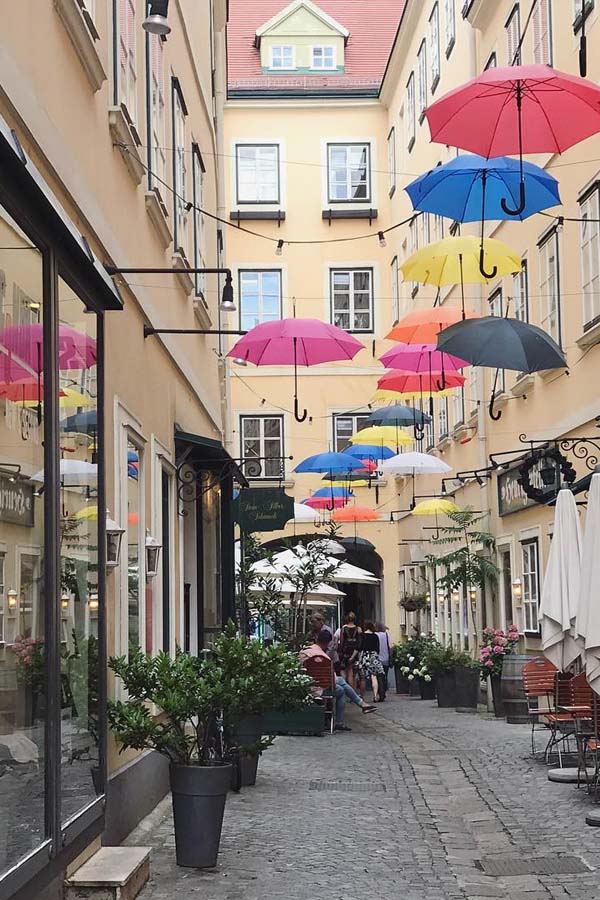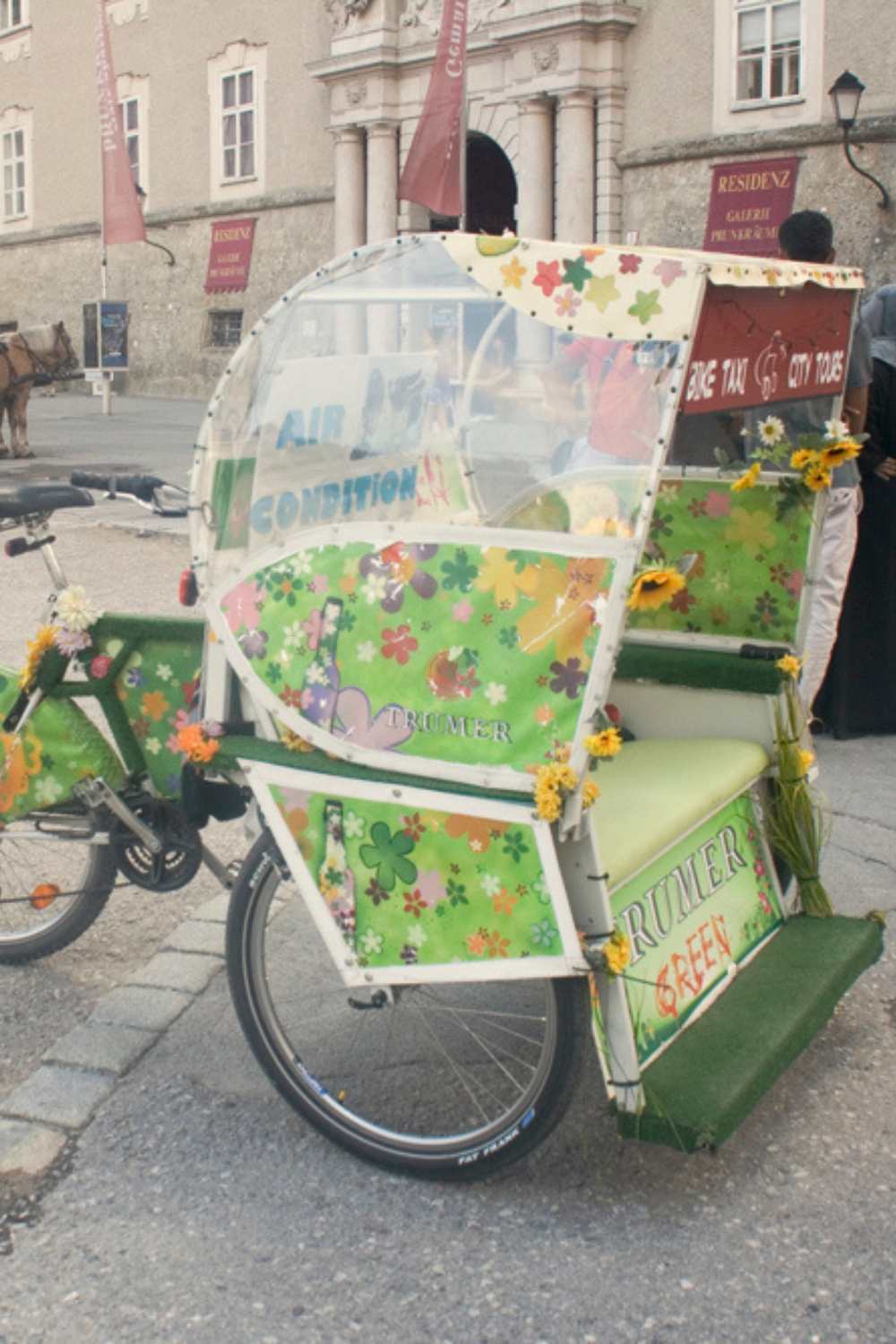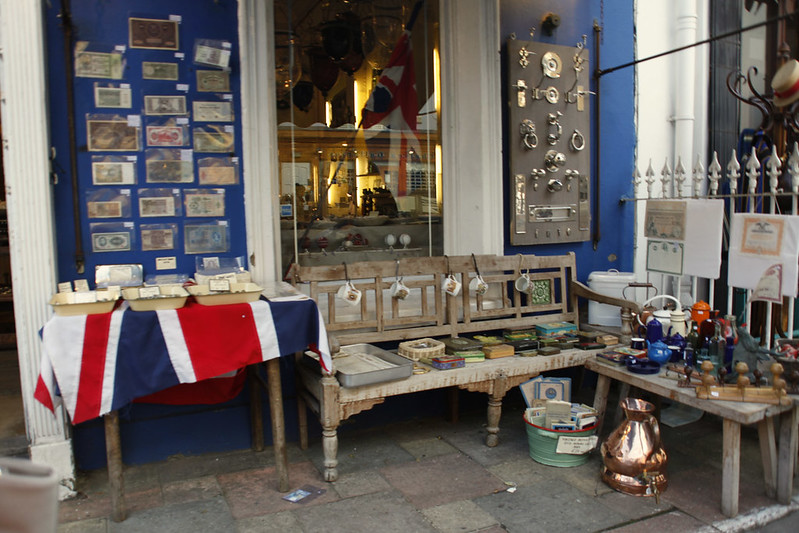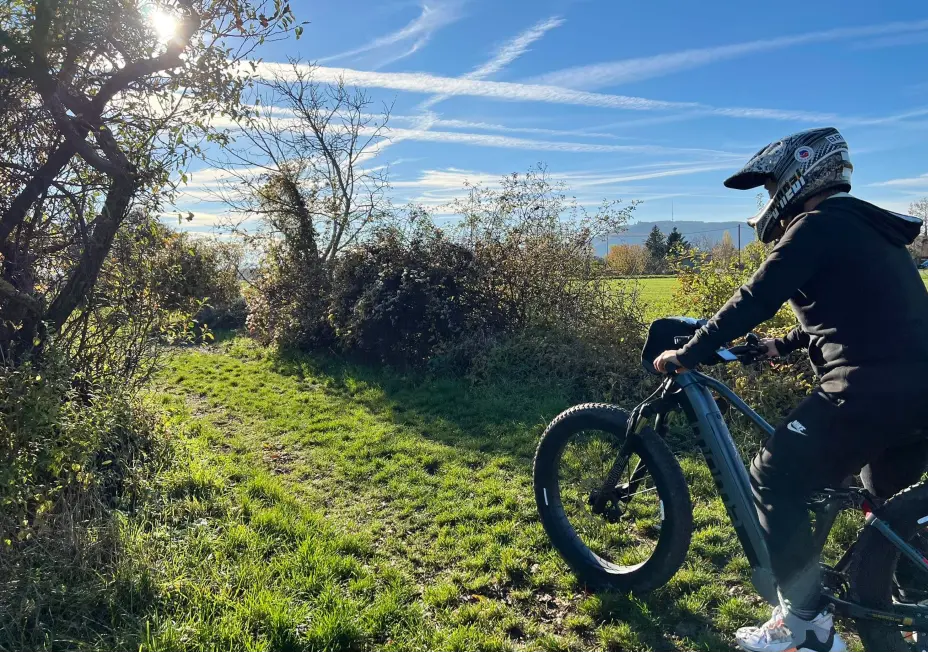
That there are a lot of benefits to riding a bike is a fact. No matter in which part of the world, cycling’s environmental advantage and ease of use are some of the reasons why cyclists use this mode of transportation. Going from point A to point B whenever visiting a city is not only eco-friendly but also enjoyable.
-
Health benefits: Biking is a great form of exercise, biking around offer scenic routes that can help you stay active and improve your health. Plus, biking is a low-impact activity that is easier on your joints than running or other high-impact exercises.
- Environmental benefits: Biking is a sustainable form of transportation that helps reduce your carbon footprint. By choosing to bike instead of driving, you can help reduce air pollution and contribute to a cleaner environment.
- Cost-effective: Biking is an affordable mode of transportation, most cities offer bike rental programs that are relatively inexpensive. You can save money on transportation costs and use it to explore the city or enjoy other activities.
-
Sightseeing: Biking is a great way to explore the city and see the sights. There are both scenic bike routes and roads less-travelled that take you through historic neighborhoods, parks, and other popular tourist destinations. You can get a unique perspective of the city that you wouldn’t get from a car or public transportation.
Sometimes, we just take photos of the bikes we see parked around the city as they seem to make the surrounding more picturesque. Here are some of our favorite photos and biking cities.

Table of Contents
Copenhagen
Copenhagen is renowned as one of the world’s premier biking cities, and for good reason. With its flat terrain, extensive network of bike lanes, and a culture that prioritizes cycling, it’s no surprise that biking is a preferred mode of transportation for many of its citizens.
One of the most remarkable aspects of biking in Copenhagen is the infrastructure dedicated to cyclists. The city boasts over 400 kilometers (250 miles) of bike lanes, many of which are physically separated from vehicular traffic, providing a safe and efficient way for cyclists to navigate the city. These lanes crisscross Copenhagen, connecting residential neighborhoods with commercial districts, parks, and other points of interest.
In addition to dedicated bike lanes, Copenhagen features numerous bike bridges and underpasses, allowing cyclists to traverse the city easily and without having to contend with traffic congestion. These infrastructure investments make biking a convenient and practical choice for commuting, running errands, or simply exploring the city.
Copenhagen is continuously working to enhance its biking infrastructure and prioritize the needs of cyclists in urban planning and development projects. This commitment to creating a bike-friendly environment has earned Copenhagen recognition as a model for sustainable transportation and urban design, inspiring other cities around the world to follow suit.

Madrid
Unlike many other cities in Spain, Seville or Barcelona for example, Madrid is not as bike-friendly. It doesn’t have a lot of cycle paths and cars abound – but there are still some bike lanes you can take to enjoy its beauty. The city has been slowly increased its network of bicycle paths in the last years. As of 2018, there are over 200km of bike lanes and Madrid plans to add 400km more by 2024. The paths are classified into bike lanes, bike sidewalk-path, shared-use paths, car-shared lanes, and greenways.
Madrid is not flat, and this adds to it being categorized as not a bike-friendly city. But if you like a little challenge, there are many rentals for you to borrow a bike from around the city. Accessible bike lanes: Both cities have invested heavily in creating dedicated bike lanes and bike-friendly infrastructure, making it safe and convenient to bike in the city. This means you can easily get around without worrying about traffic or sharing the road with cars.
Accessible bike lanes: Madrid has invested heavily in creating dedicated bike lanes and bike-friendly infrastructure, making it safe and convenient to bike in the city. This means you can easily get around without worrying about traffic or sharing the road with cars.
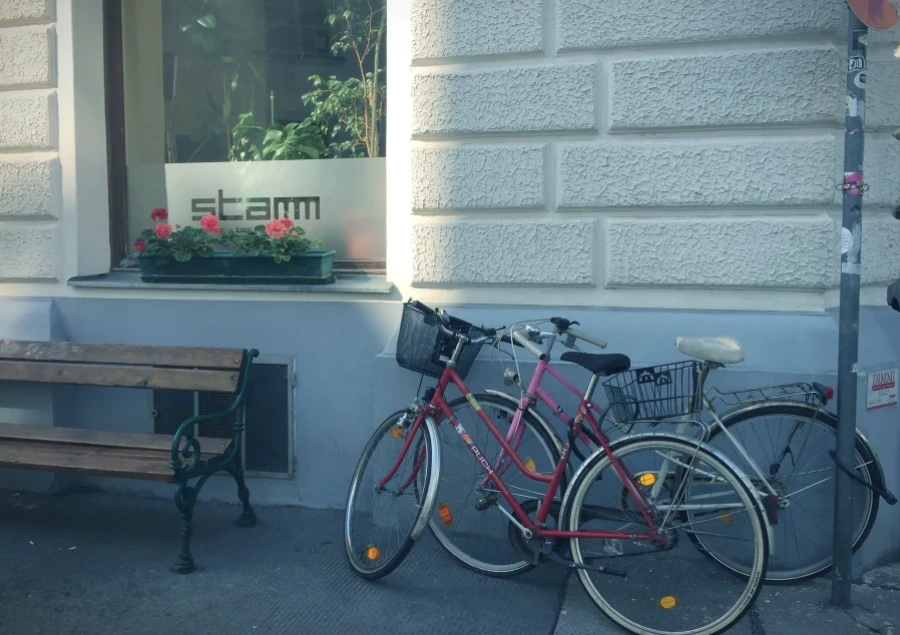
Vienna
Vienna has a well-developed cycle network throughout the whole city, constructed throughout the years. Its cycle network runs 1,654km and is constantly growing. The paths are classified into cycleways, cycle lanes, cycle paths, combined pedestrian and cycle paths, multiple purpose lanes, and traffic-calmed zones. The city also provides its bicycle-loving citizens and visitors with maps showing the city’s major cycle routes, and their connections in the existing road network. Cycling maps also has information on bike rental shops, public bicycle pumps, even drinking fountains. The city has safe and convenient bike parking on streets all-over the city.
If you are a tourist, you can go around the city in an eco-friendly way for the cheap – bike rentals that costs 1€ an hour are available! We love going around Vienna on bike with the kids, even just the nearer trails or area.

Uppland (Uppsala)
Uppsala, both the city and the county in Sweden are good for bike enthusiasts, as most of the country is. Those who explore the country would be treated to rugged mountain ranges, varied coastline views, bustling cities, with a beautiful, lush countryside.Uppsala, known for the university named after it has a good stretch of cycling network – flat and uphill. There’s a lot of recreation areas and reserve where you can go to enjoy nature and the views while pedaling off to sunrise.

Rome
Biking in Rome offers a unique and rewarding way to explore the city’s rich history, stunning architecture, and vibrant culture. While not as well-known for its biking infrastructure as some other European cities, Rome has been making efforts to become more bike-friendly in recent years.
Rome’s biking infrastructure is gradually improving, but it is not as extensive as in some other cities. The city has dedicated cycling lanes, bike paths, and shared roads with vehicles. However, it’s important to note that the biking infrastructure might not be as consistent or well-maintained as in other cities, and you may encounter some areas with challenging road conditions or limited cycling facilities.
Biking in Rome can be challenging due to the city’s narrow, winding streets, heavy traffic, and sometimes uneven road surfaces. Cyclists should be prepared to navigate through busy areas and share the road with motor vehicles. Some drivers might not be accustomed to sharing the road with cyclists, so it’s essential to be cautious and assertive while biking.
Despite the challenges, biking in Rome offers a unique cultural experience. You can ride through charming neighborhoods, discover hidden squares, and enjoy the local ambiance. Biking allows you to immerse yourself in the daily life of the city and access areas that might be less accessible by other means of transportation. Bike rental shops and guided biking tours are available throughout Rome, catering to both tourists and locals.

Berlin
Biking in Berlin is a popular and well-integrated mode of transportation that offers residents and visitors an efficient and enjoyable way to get around the city. Berlin has a reputation as a bike-friendly city, with a comprehensive network of bike lanes, bike-sharing programs, and a strong biking culture.
Biking in Berlin is a popular and well-integrated mode of transportation that offers residents and visitors an efficient and enjoyable way to get around the city. Berlin has a reputation as a bike-friendly city, with a comprehensive network of bike lanes, bike-sharing programs, and a strong biking culture.
Biking is deeply ingrained in Berlin’s culture. The city has a large population of avid cyclists who use bikes as their primary mode of transportation. As a result, there is a strong sense of camaraderie among cyclists, and the city regularly hosts biking events, group rides, and advocacy campaigns to promote cycling as a sustainable and healthy choice.
Cycling in Berlin offers a unique perspective of the city’s landmarks and attractions. Cyclists can easily explore famous sites like the Brandenburg Gate, Berlin Wall remnants, Tiergarten Park, and the East Side Gallery. Biking also provides the opportunity to discover lesser-known neighborhoods, hidden gems, and vibrant street art.
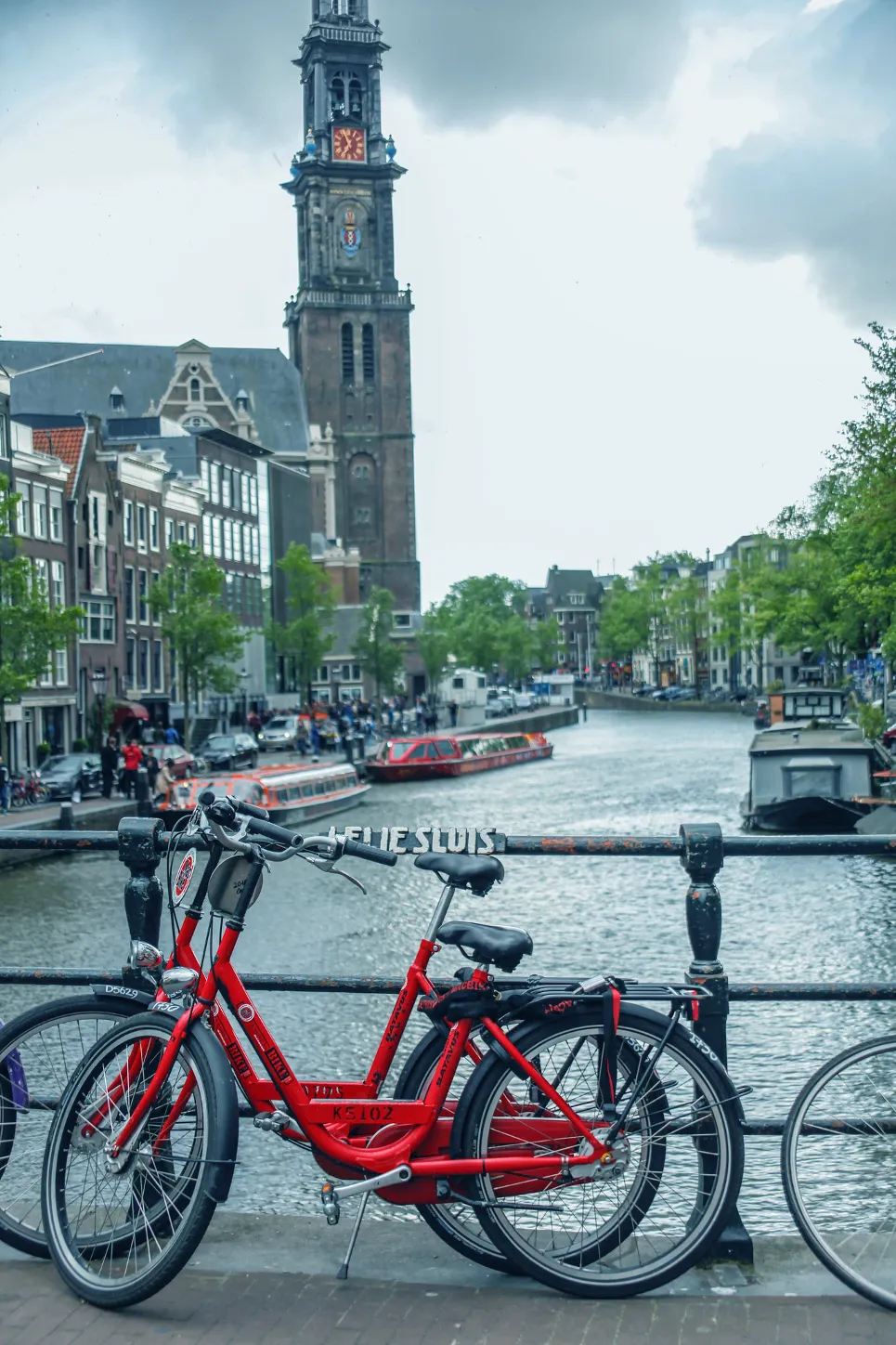
Amsterdam
No bike city-related list is complete without Amsterdam in it. It is one of the most bicycle-friendly cities, with high levels of bicycle infrastructure, planning and funding, also tourism but the negatives as well, including bike theft, losing bikes to the canals. When one hears Amsterdam, the picture of a bike parked by a canal comes to mind.
The Netherlands has a very bike-friendly route including such cities as The Hague, Eindhoven, Almere, and Groningen.
Visiting Amsterdam on a bike is a must! Experiencing how locals go about the city would make one understand a bit of its culture and preferences. The city’s network of traffic-calmed streets and facilities for cyclists include bike paths, bike racks, and guarded bicycle parking stations.
Amsterdam boasts of 35,000 km of bicycle paths, well off to be one of the longest within a city in the world.
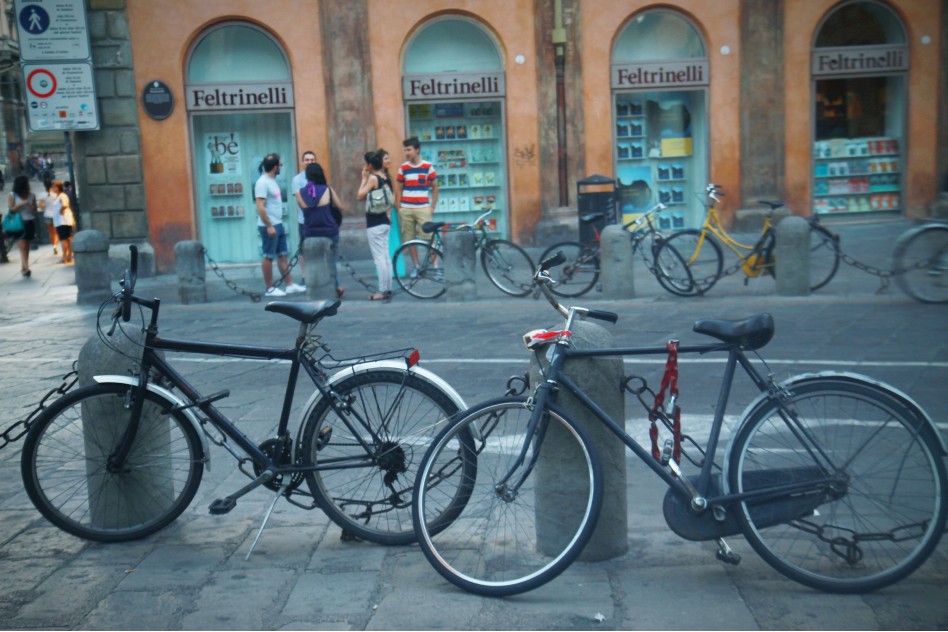
Bologna
Bologna is a historic city with narrow streets and stunning architecture that dates back to the medieval period. The city is known for its famous porticoes, which are covered walkways that line the streets and provide shade for pedestrians and cyclists alike. Biking through the porticoes is an unforgettable experience, as the arches create a stunning visual effect that makes riders feel as though they are traveling through a tunnel. In addition to the porticoes, Bologna is also home to many beautiful parks and gardens, such as the Giardini Margherita, which are perfect for a leisurely ride or a picnic.

Florence
Florence, on the other hand, is a city that is famous for its art and architecture. The city is home to many beautiful churches, museums, and galleries, as well as stunning examples of Renaissance architecture such as the Ponte Vecchio and the Duomo. Biking through Florence is a great way to experience these landmarks up close and personal, as well as to discover some of the city’s hidden gems, such as the Boboli Gardens and the Piazza della Signoria. Florence also has a dedicated bike-sharing system that makes it easy for visitors to rent a bike and explore the city at their own pace.
One of the best places to start your bike tour of Florence is in the historic city center, which is home to many of the city’s most famous landmarks, such as the Duomo, the Ponte Vecchio, and the Uffizi Gallery. The city center is also a pedestrian-only zone, which means that cyclists can enjoy the streets and alleys without worrying about car traffic.
Another great area for biking in Florence is along the banks of the Arno River. The river runs through the city and is lined with scenic bike paths and charming cafes, making it a popular destination for cyclists and walkers alike. The area also offers stunning views of the city’s historic bridges, such as the Ponte Vecchio and the Ponte Santa Trinita.
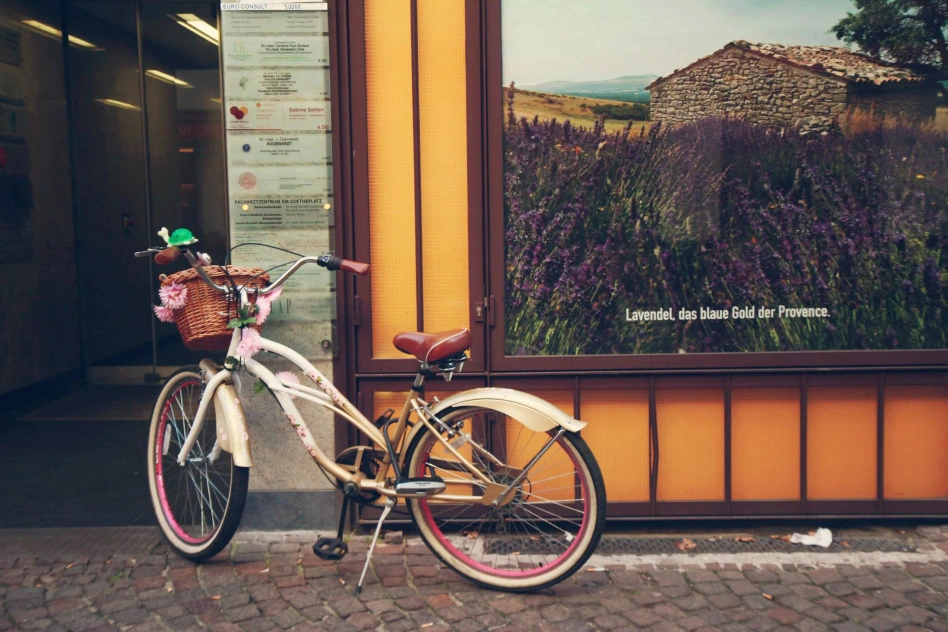
Frankfurt
Frankfurt is a city that combines the old and the new in fascinating ways. The city has a rich history that is reflected in its many beautiful churches and historic buildings, but it is also a modern metropolis that is home to some of Europe’s most innovative businesses and cutting-edge architecture. Biking through Frankfurt allows visitors to explore both sides of the city, from the charming old town to the sleek and futuristic skyscrapers that dominate the skyline. The city also has many beautiful parks and green spaces, such as the Main River Park, which is a popular destination for cyclists and walkers alike.

Fuerth
Fuerth is a charming city located in the state of Bavaria, Germany, and it is a great destination for cyclists who love to explore the outdoors. Biking through Fuerth allows visitors to experience the city’s many beautiful parks and gardens, such as the Stadtpark, which is home to a lovely lake and many scenic walking and biking paths. The city is also home to many historic buildings and museums, such as the Fuerth City Museum and the Michaeliskirche.
The city museum showcases the history and culture of Fuerth, from its early days as a small village to its present-day status as a thriving city. The Michaeliskirche, on the other hand, is a beautiful Baroque church that dates back to the 18th century and is known for its stunning architecture and ornate interior.
In addition to its parks and museums, Fuerth also has many great restaurants and cafes where visitors can sample traditional Bavarian cuisine. Some popular dishes include schnitzel, sausages, and potato dumplings, which can be washed down with a cold glass of Bavarian beer.
Overall, Fuerth is a lovely city with a rich history and culture that is well worth a visit. Whether you’re exploring the city’s many parks and gardens or admiring its historic landmarks, Fuerth offers a unique and unforgettable experience for visitors of all ages.

Nuremberg
Biking in Nuremberg is a fantastic way to explore this historic city in the heart of Germany. Nuremberg is known for its medieval architecture, stunning churches, and charming cobblestone streets, making it an ideal destination for cyclists who enjoy both culture and adventure.
One of the best places to start your bike tour of Nuremberg is in the Old Town. This area is home to many of the city’s most iconic landmarks, such as the Kaiserburg Castle, the St. Sebaldus Church, and the Frauenkirche. The Old Town is also a pedestrian-only zone, which means that cyclists can enjoy the streets and alleys without worrying about car traffic.
Another great area for biking in Nuremberg is the Pegnitz River Park. This park runs along the banks of the Pegnitz River and is a popular destination for cyclists, joggers, and walkers. The park features many scenic bike paths, as well as lovely views of the river and the city’s historic buildings.
For a more challenging bike ride, you can head out of the city and explore the surrounding countryside. The Franconian Switzerland region, which is located just outside of Nuremberg, is known for its beautiful hills, forests, and meadows. The area is home to many bike trails that wind through the countryside and offer stunning views of the landscape.
When biking in Nuremberg, it’s important to keep in mind that the city has a well-developed bike-sharing system, which makes it easy to rent a bike and explore the city’s many sights and sounds. It’s also a good idea to wear a helmet and follow traffic rules to ensure a safe and enjoyable ride.

Paris
To date, there’s 700 km (430 mi) of cycle paths and routes in Paris. These include piste cyclable (bike lanes separated from other traffic by physical barriers such as a kerb) and bande cyclable (a bicycle lane denoted by a painted path on the road). Also since 2008, 29 km (18 mi) of specially marked bus lanes are free to be used by cyclists. Cyclists have also been given the right to ride in both directions on certain one-way streets (20 mph zone).
Paris is known as the City of Love, and it is a city that is both romantic and awe-inspiring. Biking through Paris allows you to explore the city’s many charming neighborhoods and iconic landmarks, such as the Eiffel Tower, the Louvre Museum, and Notre-Dame Cathedral. Paris also has a fantastic bike-sharing system that makes it easy for visitors to rent a bike and explore the city’s many hidden gems, such as the Luxembourg Gardens, the Marais District, and the Canal Saint-Martin.
In conclusion, biking through beautiful cities is an incredible way to experience the unique culture and architecture of a place. Whether you’re exploring the medieval streets of Bologna, the Renaissance landmarks of Florence, the romantic streets of Paris, the classic characteristics of Nuremberg, or the charming parks and gardens of Fuerth, or the blend of old and new in Frankfurt, each city has its own unique charm and beauty that is best appreciated on two wheels.
